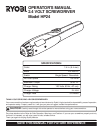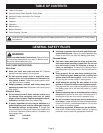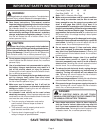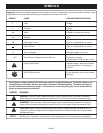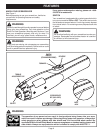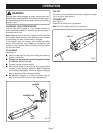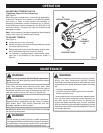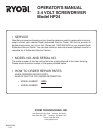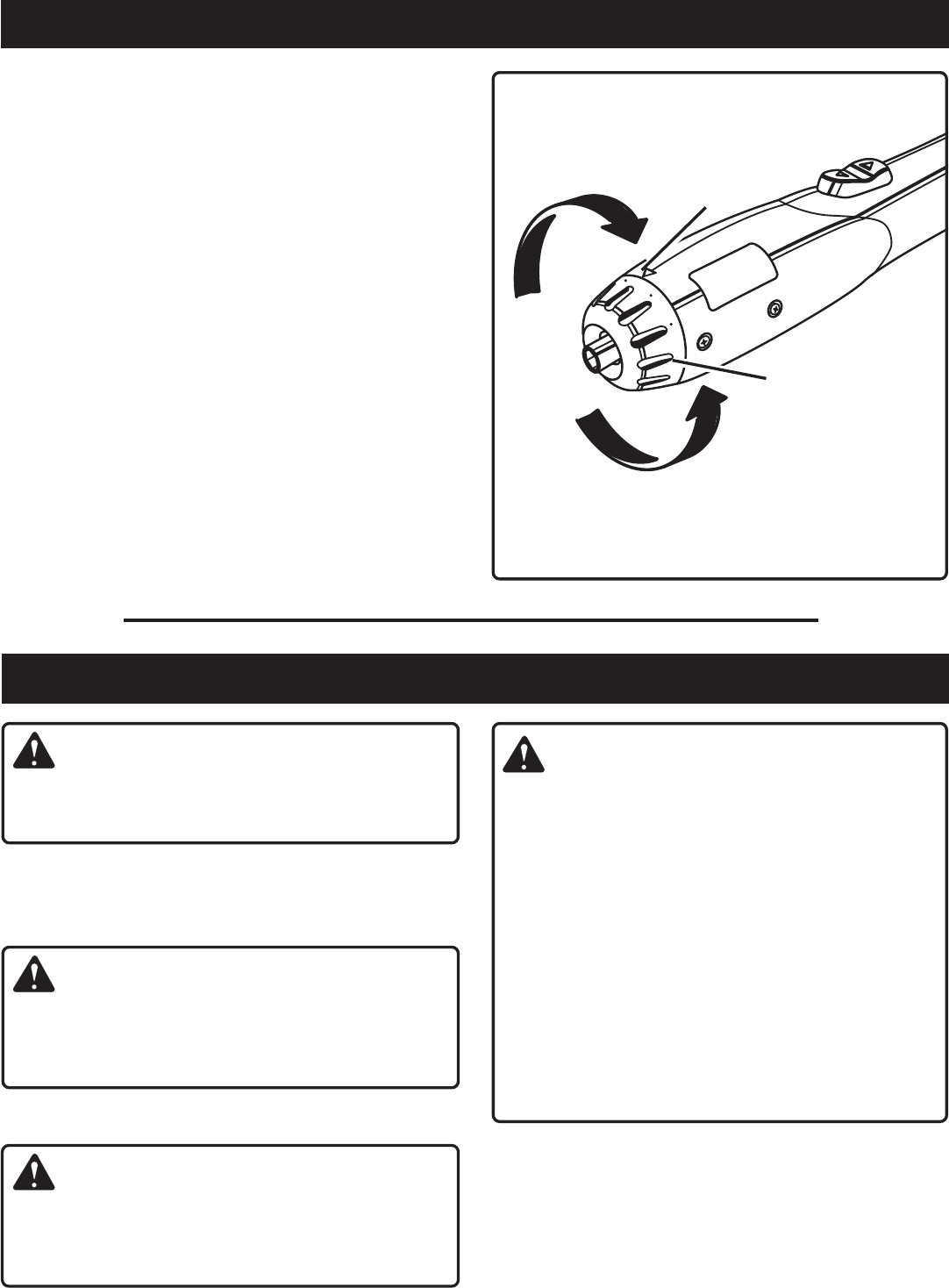
Page 8
14
14
16
16
18
18
20
20
OPERATION
ADJUSTABLE TORQUE CLUTCH
(Tightening Power of Your Screwdriver)
See Figure 4.
When using your screwdriver for various driving applications,
it becomes necessary to increase or decrease the power
and torque in order to help prevent the possibility of
damaging screwheads, threads, workpiece, etc. In general,
power and torque should correspond to the difficulty of the
screw to be driven. If torque is too high the screws may be
damaged or broken.
Note: Your screwdriver has been shipped with the adjustable
torque clutch set at the lowest torque setting.
TO ADJUST TORQUE
See Figure 4.
■ Locate arrow on front of housing.
■ Identify the twenty two torque indicator settings located
on torque adjustment cap.
■ Rotate adjustment cap to desired setting aligning num-
ber on adjustment cap with arrow on housing.
■ To increase or decrease torque, rotate torque adjust-
ment cap in the direction of the arrows as shown in
Figure 4.
MAINTENANCE
WARNING:
Some dust created by power sanding, sawing, grinding,
drilling, and other construction activities contains
chemicals known to cause cancer, birth defects or other
reproductive harm. Some examples of these chemicals
are:
• lead from lead-based paints,
• crystalline silica from bricks and cement and other
masonry products, and
• arsenic and chromium from chemically-treated lumber.
Your risk from these exposures varies, depending on
how often you do this type of work. To reduce your
exposure to these chemicals: work in a well ventilated
area, and work with approved safety equipment, such as
those dust masks that are specially designed to filter out
microscopic particles.
Fig. 4
ARROW
TO
DECREASE TORQUE
TO
INCREASE TORQUE
TORQUE
ADJUSTMENT
CAP
WARNING:
When servicing, use only identical Ryobi replacement
parts. Use of any other part may create a hazard or cause
product damage.
Avoid using solvents when cleaning plastic parts. Most
plastics are susceptible to damage from various types of
commercial solvents and may be damaged by their use.
Use clean cloths to remove dirt, dust, oil, grease, etc.
WARNING:
Do not at any time let brake fluids, gasoline, petroleum-
based products, penetrating oils, etc. come in contact
with plastic parts. They contain chemicals that can
damage, weaken or destroy plastic.
Do not abuse power tools. Abusive practices can damage
tool as well as workpiece.
WARNING:
Do not attempt to modify this tool or create accessories
not recommended for use with this tool. Any such alteration
or modification is misuse and could result in a hazardous
condition leading to possible serious personal injury.



